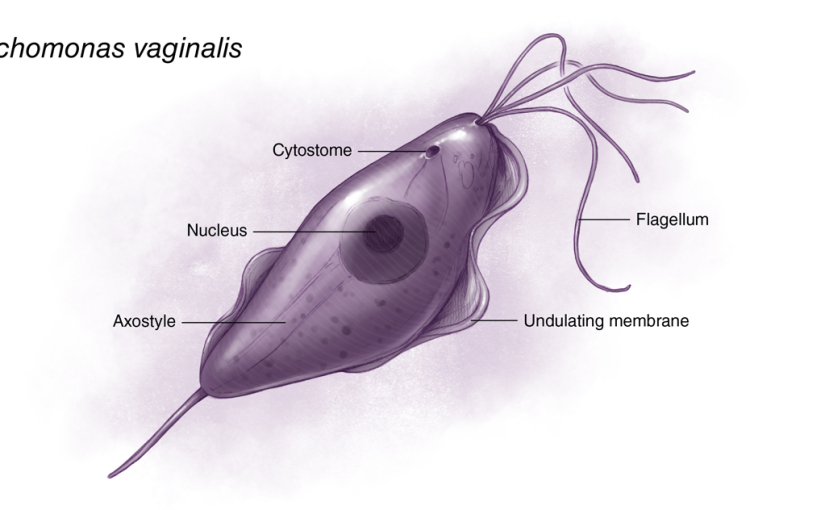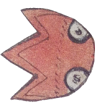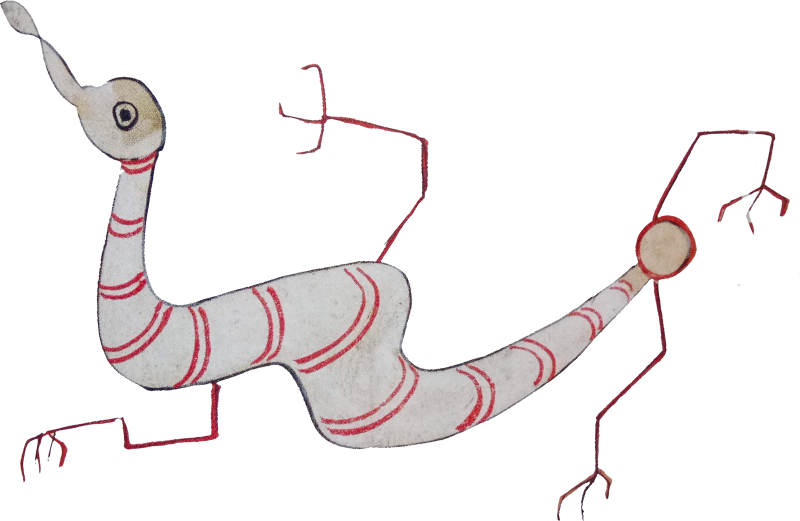
DAY THIRTY: KAGE MUSHI
("SHADOW BUG")
GRAPHIC LANGUAGE WARNING
Written by Jonathan Wojcik, Researched and Translated by Rev Storm
"During intercourse between a man and woman, both may suddenly scream as their crotches gush forth. From the woman comes a bloody discharge, and from the man a white fluid, but both will spew the bugs from their mouths. During intercourse, the male bug and the female bug will intertwine one another with their wire-like legs and not let go."
Design Review:
What makes this one a "shadow bug" anyway? It doesn't look shadowy, and it's not associated with darkness. Is it simply supposed to be that creepy and nefarious? I could certainly see that. Besides having the most disgusting symptoms, it also has one of the most unique and stylish designs of all the bugs with its candy-cane striping, goofy snout and crooked, red stick-legs. Easily one of my favorites!And lucky you, the closest thing to it in real life is actually even grosser.
TODAY'S REAL WORLD PARASITE:
Trichomonis vaginalis

This is only the second and last sexually transmitted entry in this feature and one of the few other sexually transmitted diseases in humans to be a "parasite" in the truest sense, which is to say that it is not a viral or bacterial pathogen. Vaginalis is in fact a single-celled protozoan, closer in structure to the cell of an animal and even capable of active movement with its whip-like flagellae. It's also closely related to several other, similar parasitic protozoa including the dreaded Giardia, or "beaver fever" famous for causing lethal dysentary on the good old Oregon trail, as well as a few less intrusive species who live comparatively more peaceful lives in our digestive tracts. (*This last one, the friendlier intestine-dweller, is what the character Trichia in my webcomic was supposed to be.)
Vaginalis, however, is one of the obligate parasites of the bunch, meaning that it is adapted especially for a parasitic lifestyle and nothing else. Take notice of the axostyle in the illustration; that's a tough barb the parasite uses to hook itself onto the cell wall of its host, where it can absorb nutrients from the host cells without the need of its own enzymes or even its own mitochondria.
The species gets its lovely little name from the fact that it is especially adapted to adhere to the cervicovaginal epithelium, even fine-tuned to the harsh PH and temperature of the vaginal lining, though it just as easily spreads to the urethral lining of a penis during intercourse, and adapted to the tract of every kind of human genitalia to ensure that it spreads even more easily.
When their population becomes dense enough, the collective axostyles and feeding processes of several million protozoa can cause enough irritation to trigger the condition known as Trichomoniasis, marked first by uncomfortable burning and itching. Left untreated, it can progress within a couple of weeks to more significant pain, swelling, excessive urination, and what medical texts so clinically describe as a "frothy, fishy-smelling discharge" that can be white, gray, yellow, or even green.
Fun fact: this is another parasite you can be infected with for many years without noticing a single symptom, and these milder cases may even die off on their own. This does not, however, make them any less infectious to other people, and this is just another reason why sexual education is so important. That, and the fact that this parasite's damage and irritation to the genital walls happens to give other pathogens much easier access to the tissues, including viruses such as HIV.
NAVIGATION:





































































